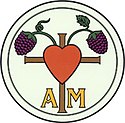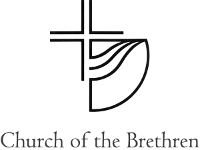
The Church of the Brethren is an Anabaptist Christian denomination in the Schwarzenau Brethren tradition that was organized in 1708 by Alexander Mack in Schwarzenau, Germany during the Radical Pietist revival. The denomination holds the New Testament as its only creed. Historically, the church has taken a strong stance for nonresistance or Christian pacifism—it is one of the three historic peace churches, alongside the Mennonites and Quakers. Distinctive practices include believer's baptism by forward trine immersion; a threefold love feast consisting of feet washing, a fellowship meal, and communion; anointing for healing; and the holy kiss. Its headquarters are in Elgin, Illinois, United States.
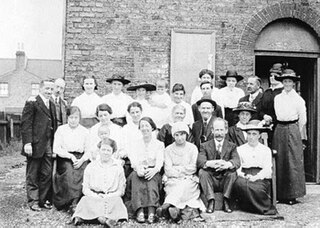
The Plymouth Brethren or Assemblies of Brethren are a low church and Nonconformist Christian movement whose history can be traced back to Dublin, Ireland, in the mid to late 1820s, where it originated from Anglicanism. The group emphasizes sola scriptura, the belief that the Bible is the only authority for church doctrine and practice. Plymouth Brethren generally see themselves as a network of like-minded free churches, not as a Christian denomination.
Two-Seed-in-the-Spirit Predestinarian Baptists are part of a larger sub-group of Baptists that is commonly referred to as "anti-mission" Baptists. This sub-group includes the Duck River and Kindred Baptists, Old Regular Baptists, some Regular Baptists and some United Baptists. Only a minuscule minority of Primitive Baptists adhere to the Two-Seed doctrine. The primary centers of Two-Seedism were in Northern Alabama, Arkansas, Eastern Tennessee, Florida, Georgia, Illinois, Indiana, and Texas. As of 2002, five churches or congregations of this faith and order still existed in Alabama, Indiana, Tennessee, and Texas.

The Schwarzenau Brethren, the German Baptist Brethren, Dunkers, Dunkard Brethren, Tunkers, or sometimes simply called the German Baptists, are an Anabaptist group that dissented from Roman Catholic, Lutheran and Reformed European state churches during the 17th and 18th centuries. German Baptist Brethren emerged in some German-speaking states in western and southwestern parts of the Holy Roman Empire as a result of the Radical Pietist revival movement of the late 17th and early 18th centuries, where people began to read and study their Bibles on their own- rather than just being told what to believe and do.
The Mennonite Brethren Church is an evangelical Mennonite Anabaptist movement with congregations.
John Taylor (1752–1833) was a pioneer Baptist preacher, religious writer, frontier historian and planter in north and central Kentucky. His two histories of early Baptist churches in Kentucky provide insight into the frontier society of the early decades of the 19th century. His 1820 pamphlet entitled "Thoughts on Missions" put him at the center of the controversy within frontier Baptist congregations about supporting mission societies. In buying and selling land on the frontier, Taylor acquired 2,000 acres (8.1 km2) and 20 African-American slaves by the end of the first decade of the 19th century, thus entering the planter class.
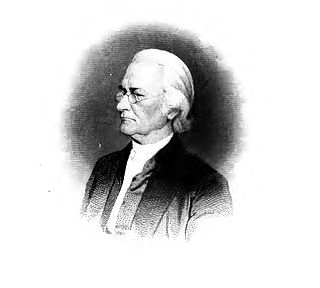
William Meade was an American Episcopal bishop, the third Bishop of Virginia.

John Leland was an American Baptist minister who preached in Massachusetts and Virginia, as well as an outspoken abolitionist. He was an important figure in the struggle for religious liberty in the United States. Leland also later opposed the rise of missionary societies among Baptists.

Circuit riders, also known as horse preachers, were clergy assigned to travel around specific geographic territories to minister to settlers and organize congregations. Circuit riders were clergy in the Methodist Episcopal Church and related denominations, although similar itinerant preachers could be found in other faiths as well, particularly among minority faith groups. They were most prominent during the early years of the United States, from 1784–1830, and were part of the Second Great Awakening revival movement.
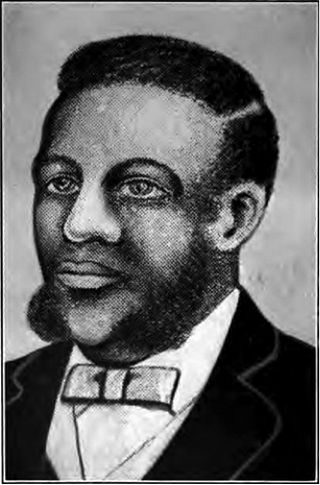
Lott Cary was an African-American Baptist minister and lay physician who was a missionary leader in the founding of the colony of Liberia on the west coast of Africa in the 1820s. He founded the first Baptist church in 1822, now known as Providence Baptist Church of Monrovia. He served as the colony's acting governor from August 1828 to his death in November that year.
Shubal Stearns was a colonial evangelist and preacher during the Great Awakening. He converted after hearing George Whitefield and planted a Baptist Church in Sandy Creek, Guilford County, North Carolina. Stearns' highly successful ministry was related to the rise and expansion of the Separate Baptists — especially in much of the American South.
Samuel Hiestand was an American Bishop of the Church of the United Brethren in Christ, elected in 1833. He was the ninth Bishop of this Christian denomination.

Peter Nead was an American preacher in the German Baptist Brethren church that descended from the Schwarzenau Brethren. He wrote several theological works, which were influential in the Old German Baptist Brethren and related churches, perhaps the most prominent being "A Vindication of Primitive Christianity."

Benjamin Ingham was an English cleric who was the founder of the Moravian Church in England as well as his own Inghamite societies.

Liberty Universalist Church and Feasterville Academy Historic District is a national historic district located near Winnsboro, Fairfield County, South Carolina. The property encompasses four buildings constructed between 1831 and 1845. They are the Liberty Universalist Church and three buildings associated with the Academy: a boarding house, a kitchen, and a school building. The buildings were constructed by the Feaster family.

Elhanan Winchester was an American theologian who explored numerous theological paths before becoming an advocate for universal restoration. As a result, Winchester is considered among the early leaders of American Universalism.

The First African Baptist Church of Richmond, Virginia is a Baptist Church. Founded in 1841, its members included both slaves and freedmen. It has since had a major influence on the local black community. At one point, it was one of the largest Protestant churches in the United States.
The Open Brethren, sometimes called Christian Brethren, are a group of Evangelical Christian churches that arose in the late 1820s as part of the Assembly Movement within the Plymouth Brethren tradition. They originated in Ireland before spreading throughout the British Isles, and today they have an estimated 26,000 assemblies worldwide.

Samuel Kinsey was a Christian minister and leader of the reactionary wing of the German Baptist Brethren that became the Old German Baptist Brethren.
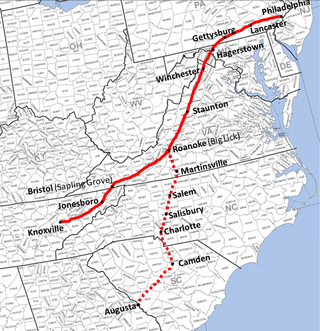
The Shenandoah Valley region of Virginia and parts of West Virginia is home to a long-established German-American community dating to the 17th century. The earliest German settlers to Shenandoah, sometimes known as the Shenandoah Deitsch or the Valley Dutch, were Pennsylvania Dutch migrants who traveled from southeastern Pennsylvania. These German settlers traveled southward along what became known as the Great Wagon Road. They were descendants of German, Swiss, and Alsatian Protestants who began settling in Pennsylvania during the late 1600s. Among them were German Palatines who had fled the Rhineland-Palatinate region of southwestern Germany due to religious and political persecution during repeated invasions by French troops.
